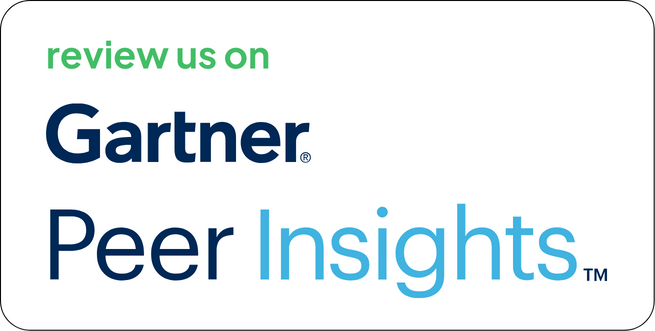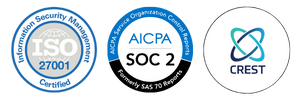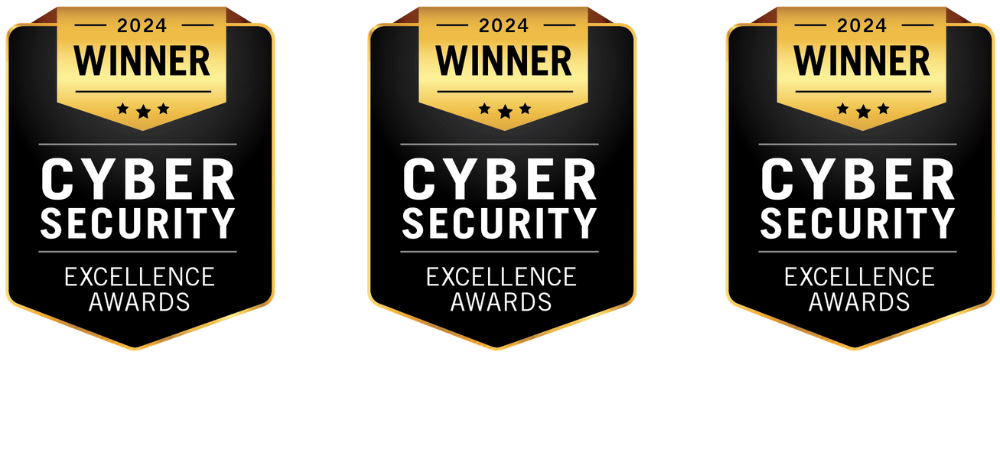Do you know? More than 40,000 new software vulnerabilities were disclosed in 2024, 61% surge from 2023 while the number of actively exploited vulnerabilities nearly doubled. Such volume translates into thousands of exploitable risks waiting in your systems.
Industry data shows that 30% of security incidents involve breaches of public-facing applications, while nearly 25% involve internal lateral movement after initial compromise. This guide breaks down proven vulnerability management best practices, based on years of operational experience and enhanced by the capabilities of Strobes Security. If you are responsible for protecting a large and complex environment, these practices will help you move from chasing vulnerabilities to managing them as part of a measurable, strategic program.
Understanding Vulnerability Management
At its most basic, vulnerability management is the structured process of identifying weaknesses, assessing their potential impact, prioritizing them based on risk, and ensuring they are resolved effectively. It is not dealing with just a few dozen servers or a handful of applications. Instead, there are:
- Multiple technology stacks, legacy systems running alongside modern cloud-native applications.
- Thousands of endpoints from corporate laptops and mobile devices to IoT sensors and industrial control systems.
- Global operations assets distributed across multiple geographies, each with its own compliance obligations.
- Third-party integrations SaaS applications, partner systems, and outsourced development that extend your risk surface.
At this scale, vulnerability management cannot be treated as a one-off exercise. It must operate as a continuous cycle, supported by centralized visibility, consistent prioritization, and strong governance. Without these, teams risk drowning in unprocessed scan results and unresolved vulnerabilities.
Vulnerability Management Best Practices For Enterprises
The following are the vulnerability management best practices. help address these challenges and build a program that can operate effectively.
1. Define Clear Goals and Governance
Effective vulnerability management starts with clarity. Without clearly defined goals, the program can easily become a “scan-and-forget” exercise.
- Link to business objectives: Identify which systems support critical services and prioritize them. For example, vulnerabilities affecting your payment gateway should receive higher urgency than those in a low-risk test environment.
- Assign ownership: Security teams may run the scans, but remediation often falls to IT operations or development teams. Clear accountability ensures nothing falls through the cracks.
- Set measurable KPIs: Metrics like Mean Time to Remediate (MTTR), SLA compliance, and percentage reduction in critical vulnerabilities give you a way to measure progress.
Strobes allows you to define program objectives, set SLA rules for vulnerabilities, and assign remediation tasks directly to the right owners with full accountability tracking.
2. Maintain a Comprehensive Asset Inventory
You cannot protect assets you don’t know exist. Enterprises must treat asset discovery as a continuous process, not an annual audit.
- Automated discovery Use tools that constantly scan your networks, cloud accounts, and endpoints to identify new or changed assets.
- Categorize by criticality Not all assets are equal. Prioritize protection for systems tied to sensitive data or revenue-generating services.
- Real-time updates Asset data should update automatically when changes occur, such as the deployment of new cloud workloads.
Strobes ASM continuously discovers both internal and external assets, mapping them into a single view so you can quickly identify high-value targets that attackers might focus on.
3. Risk-Based Prioritization
Attempting to fix every vulnerability in your environment is neither realistic nor necessary. Risk-based prioritization allows you to focus on what matters most.
- Context over raw scores CVSS scores are a starting point, but you should also consider exploitability, business impact, and exposure.
- Threat intelligence If a vulnerability is actively being targeted in the wild, it should be prioritized even if its base score is moderate.
- Business context A vulnerability in a publicly accessible application is often more critical than a higher-scoring issue on an isolated system.
Strobes RBVM merges vulnerability data with real-time threat intelligence and asset criticality to create a priority score that reflects your business risk, not just a generic severity rating.
4. Combine Automation with Human Expertise
Automation is essential for speed, but it cannot replace human judgment in all scenarios.
- Automated scanning Quickly covers large environments and detects known vulnerabilities at scale.
- Manual testing Identifies more complex issues like business logic flaws, chained exploits, and misconfigurations that scanners miss.
- Unified view Combine results from multiple scanning tools and manual testing into a central platform to reduce duplication and blind spots.
How Strobes Security Helps: Strobes integrates with leading SAST, DAST, SCA, and infrastructure scanners, consolidates results, and supports manual pentesting workflows in one platform.
5. Integrate into the SDLC
Security is most effective when integrated early into the software development lifecycle.
- Shift-left testing Identify vulnerabilities during development rather than after release.
- CI/CD integration Automate scanning as part of build pipelines so issues are caught before deployment.
- Automated ticketing Create remediation tickets in developer tools like Jira or Azure DevOps without manual effort.
Strobes integrates seamlessly with developer tools and CI/CD pipelines, ensuring vulnerabilities are detected and addressed before they reach production.
6. Strong Remediation Workflows
Finding vulnerabilities is the easy part; fixing them quickly is harder.
- Clear assignment Directly assign issues to the right individuals or teams.
- SLA tracking Monitor remediation timelines to ensure critical issues are resolved on time.
- Detailed guidance Provide actionable instructions so teams know exactly how to resolve an issue.
Strobes automatically assigns remediation tasks, tracks SLAs, and includes remediation guidance with context for each vulnerability.
7. Retest and Validate Fixes
Closing a vulnerability in a ticketing system does not guarantee it’s resolved.
- Verification scans Run automated checks to confirm fixes are effective.
- Manual validation For complex issues, manual verification ensures accuracy.
- Document closure Maintain records for compliance and auditing purposes.
Strobes incorporates retesting into its workflow, ensuring vulnerabilities are not just marked as fixed but confirmed as resolved.
8. Enhance Cross-Team Collaboration
Vulnerability management is a shared responsibility.
- Security teams Identify and assess vulnerabilities.
- IT operations Apply fixes to the infrastructure.
- DevOps teams Remediate code-related vulnerabilities.
- Compliance teams Validate and report for regulatory requirements.
Role-based access controls in Strobes ensure that each team has the right level of visibility and accountability without overwhelming them with irrelevant details.
Also Read: How PTaaS Enhances Security Collaboration Between Security Teams and Developers
9. Use Threat Intelligence
Without real-world context, prioritization is incomplete.
- Mapping to active threats Identify vulnerabilities currently exploited in attacks.
- Zero-day awareness Monitor high-risk vulnerabilities even before patches are available.
- Industry-specific risks Understand threats targeting your specific sector.
Strobes integrates curated threat intelligence feeds that directly influence vulnerability prioritization scores.
10. Measure and Report
Measurement turns vulnerability management from a reactive process into a business-aligned function.
- Operational metrics MTTR, remediation rates, SLA compliance.
- Risk metrics Reduction in exposure over time.
- Executive reporting Clear summaries for non-technical stakeholders.
Strobes generates executive-friendly dashboards and detailed technical reports with just a few clicks.
Continuous Improvement and Maturity
The most successful vulnerability management programs are those that continuously refine themselves.
- Regular reviews: Assess progress against KPIs and adapt processes.
- Post-incident learning: Apply lessons from breaches or near misses.
- Maturity models: Move from reactive fixing to proactive exposure management.
Strobes supports this progression with its Risk-Based Vulnerability Management (RBVM) capabilities, enabling enterprises to continuously assess and reduce their attack surface.
How Strobes Streamlines Vulnerability Management For Enterprises
The image above illustrates how Strobes Risk-Based Vulnerability Management unifies the entire vulnerability lifecycle from discovery to remediation into a single, intelligent workflow designed for teams.
1. Data Aggregation from Multiple Sources
Enterprises often use a variety of scanners like DAST, SAST, infrastructure, cloud, and asset inventory tools each generating its own results. Strobes consolidates this fragmented data into a single source of truth through automated Vulnerability/Asset Data Aggregation. This ensures nothing slips through the cracks, regardless of the tool used.
2. Intelligent Vulnerability Correlation
Raw scan outputs are rarely clean or deduplicated. Strobes correlates vulnerabilities across tools, eliminating duplicates and linking related issues. This correlation helps security teams see which vulnerabilities matter most in context rather than being buried under repeated findings.
3. Risk-Based Prioritization
Not every vulnerability deserves immediate attention. Strobes applies risk-based prioritization by combining threat intelligence, asset criticality, exploitability data, and business context. This allows teams to focus first on vulnerabilities that present the highest likelihood of exploitation and the greatest business impact.
4. Orchestrated Remediation
Fixing vulnerabilities at enterprise scale requires coordination across multiple teams. Strobes enables Remediation Orchestration by integrating directly with workflow automation and ticketing platforms like ServiceNow. This ensures remediation tasks are assigned to the right owners, tracked against SLAs, and verified after completion.
5. AI-Powered Automation
- Underpinning the process are Strobes AI Agents, which handle:
- Intelligent Triaging: Automatically categorizing vulnerabilities based on real-world risk.
- Compliance Automation: Aligning vulnerability data with frameworks such as PCI DSS, HIPAA, and ISO 27001.
- Automated Risk Assessment: Continuously updating risk scores as threat and asset data changes.
6. Seamless Collaboration
Strobes integrates with collaboration platforms like Slack, Gmail, and Microsoft Teams, ensuring that vulnerability insights and remediation updates reach the right stakeholders without delay.
In essence, this approach transforms vulnerability management from a scattered, tool-specific activity into a cohesive, automated, and risk-aware process. For enterprises, this means faster remediation, better prioritization, and measurable reduction in security exposure.
Conclusion
Vulnerability management is a complex challenge, but with the right structure, tools, and processes, it becomes a measurable and repeatable discipline.
From asset discovery to intelligent prioritization, remediation workflows, and validation, the practices we’ve covered form the foundation for a program that truly reduces risk.
Strobes Security helps enterprises operationalize vulnerability management by combining:
- Attack Surface Management (ASM) for asset visibility.
- Risk-Based Vulnerability Management (RBVM) for intelligent prioritization.
- PTaaS for manual testing where automation falls short.
- Integrated remediation and retesting for end-to-end closure.
If your enterprise is ready to move from scattered, siloed efforts to a unified, risk-focused approach, Strobes can help.
Schedule a personalized demo today and see how Strobes transforms vulnerability management from a reactive task list into a proactive, business-aligned security function.








